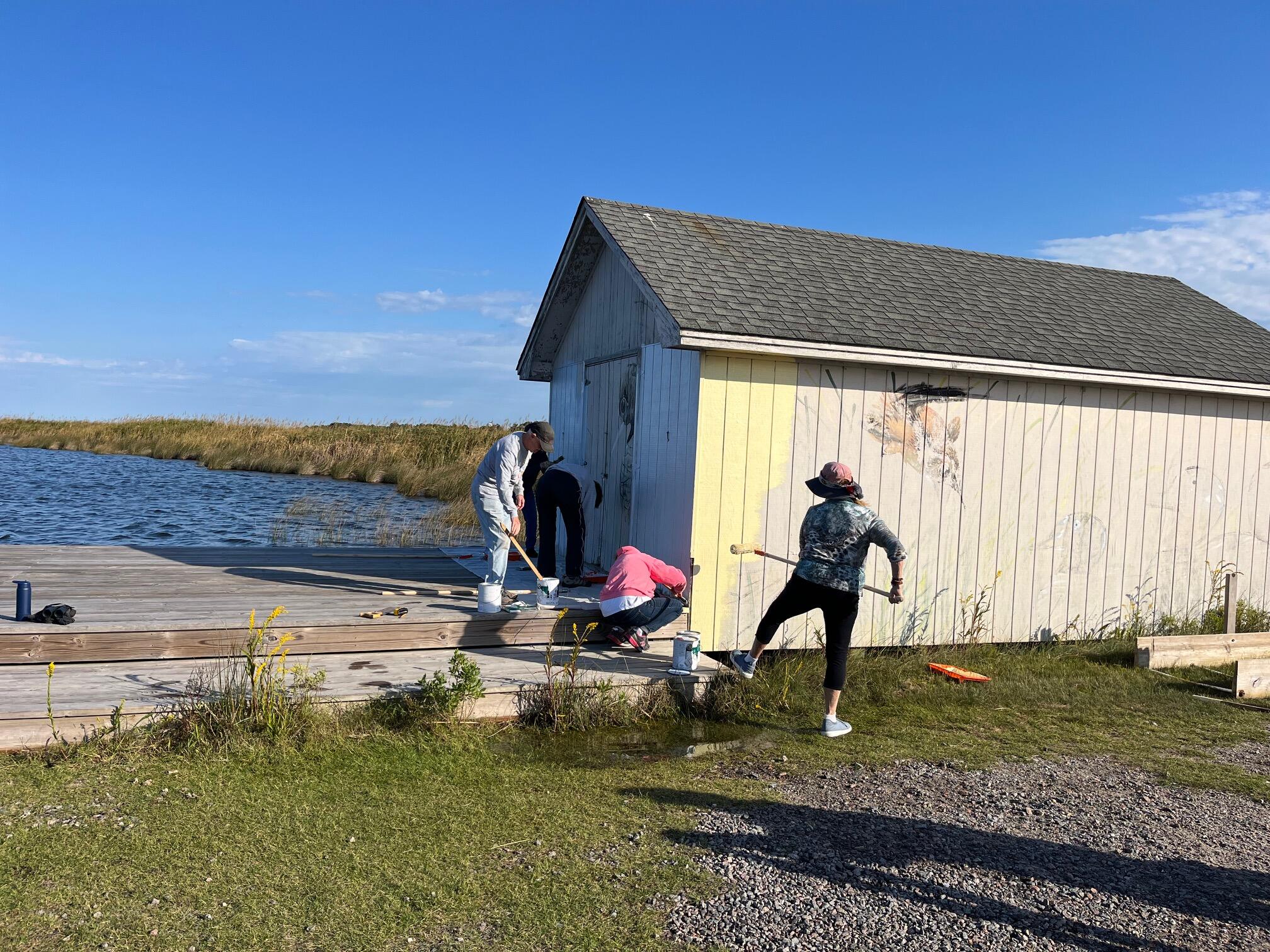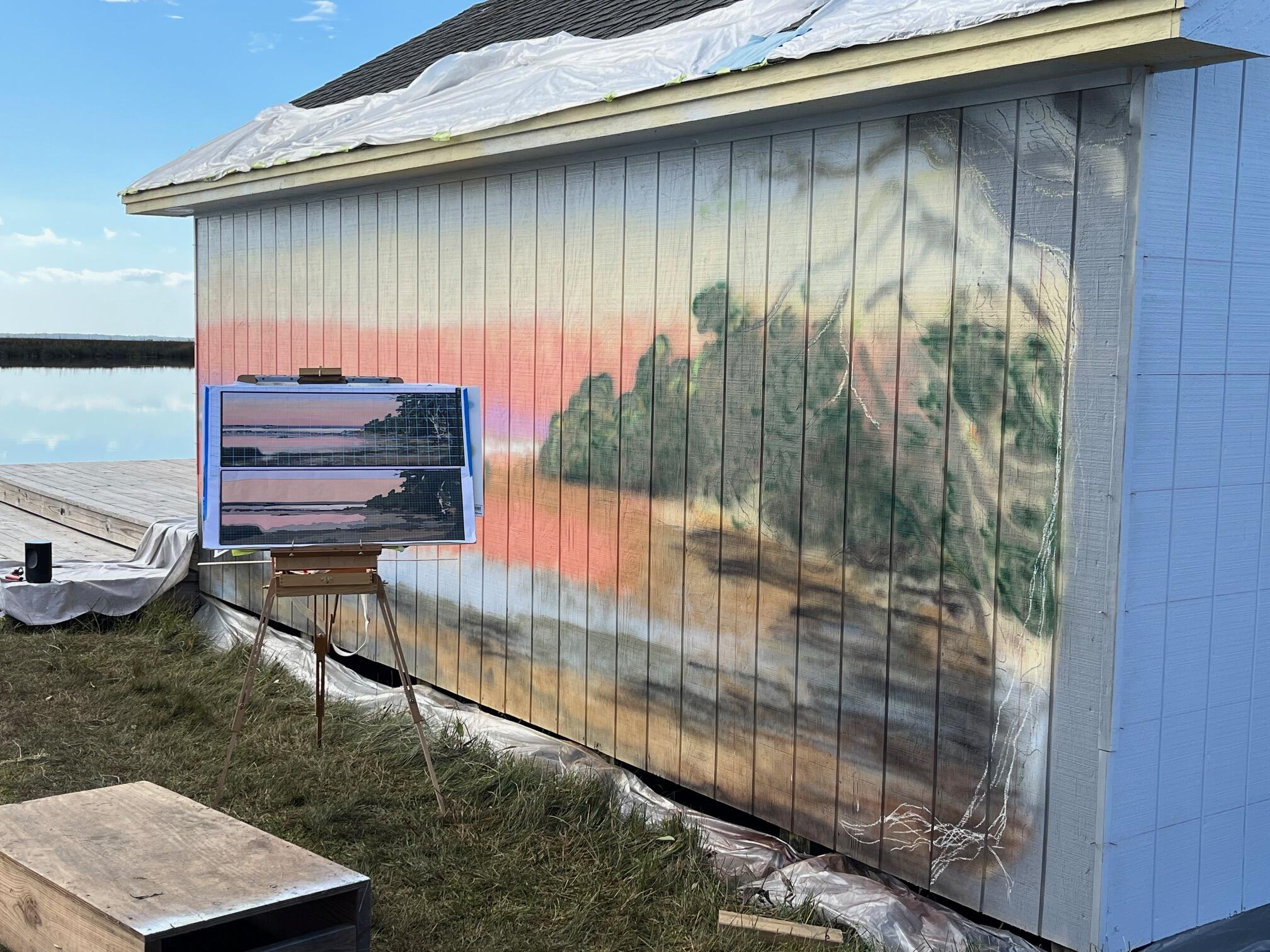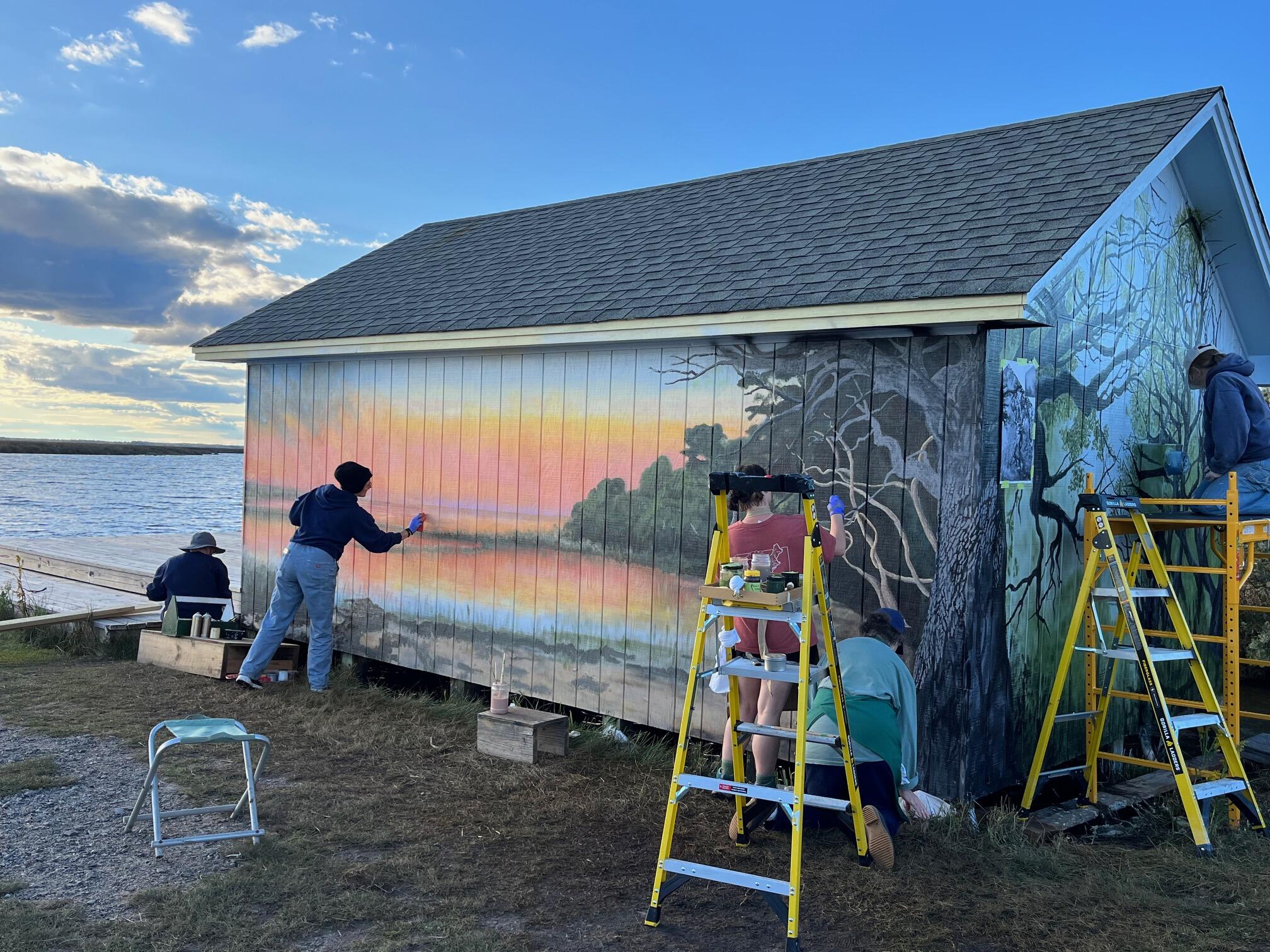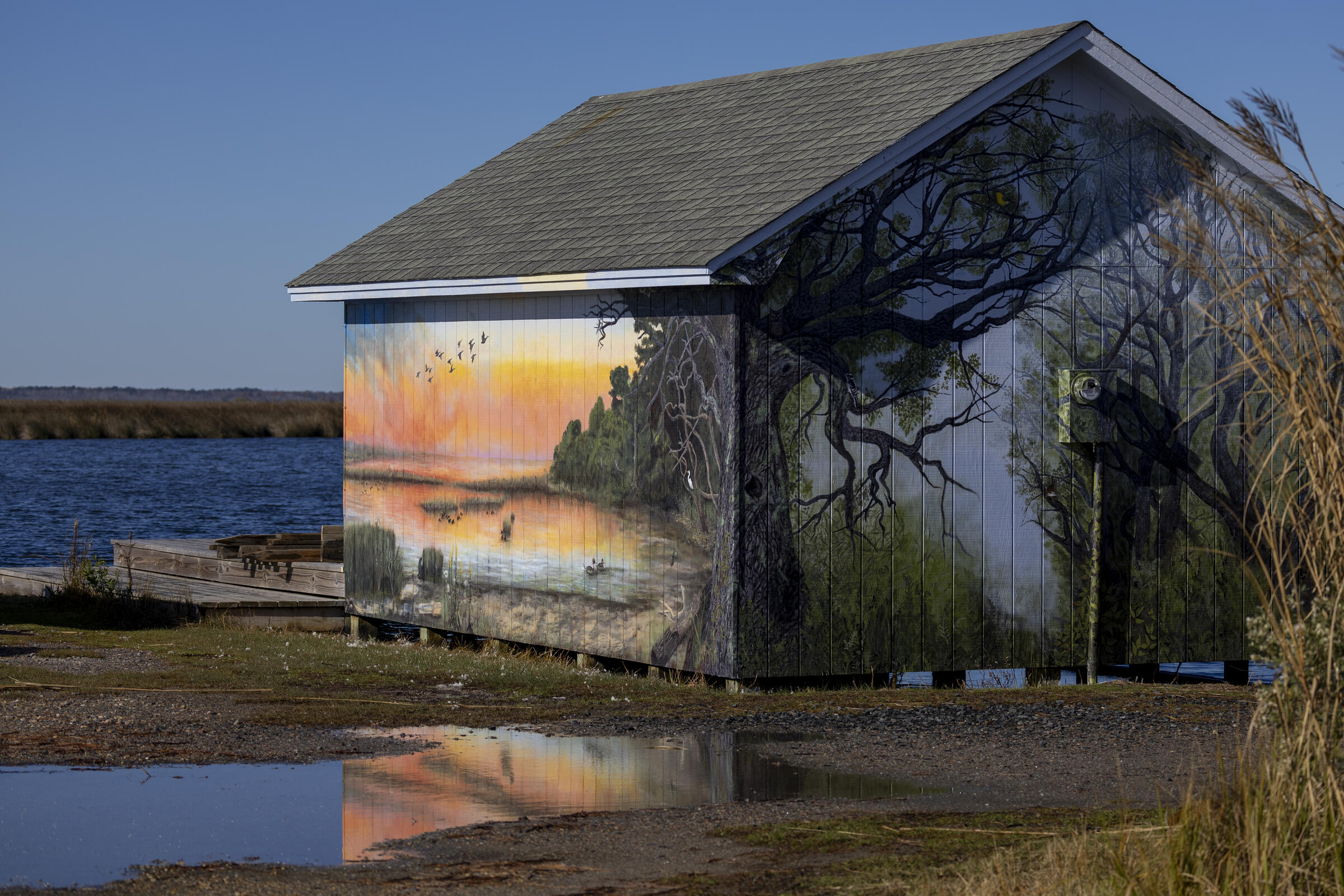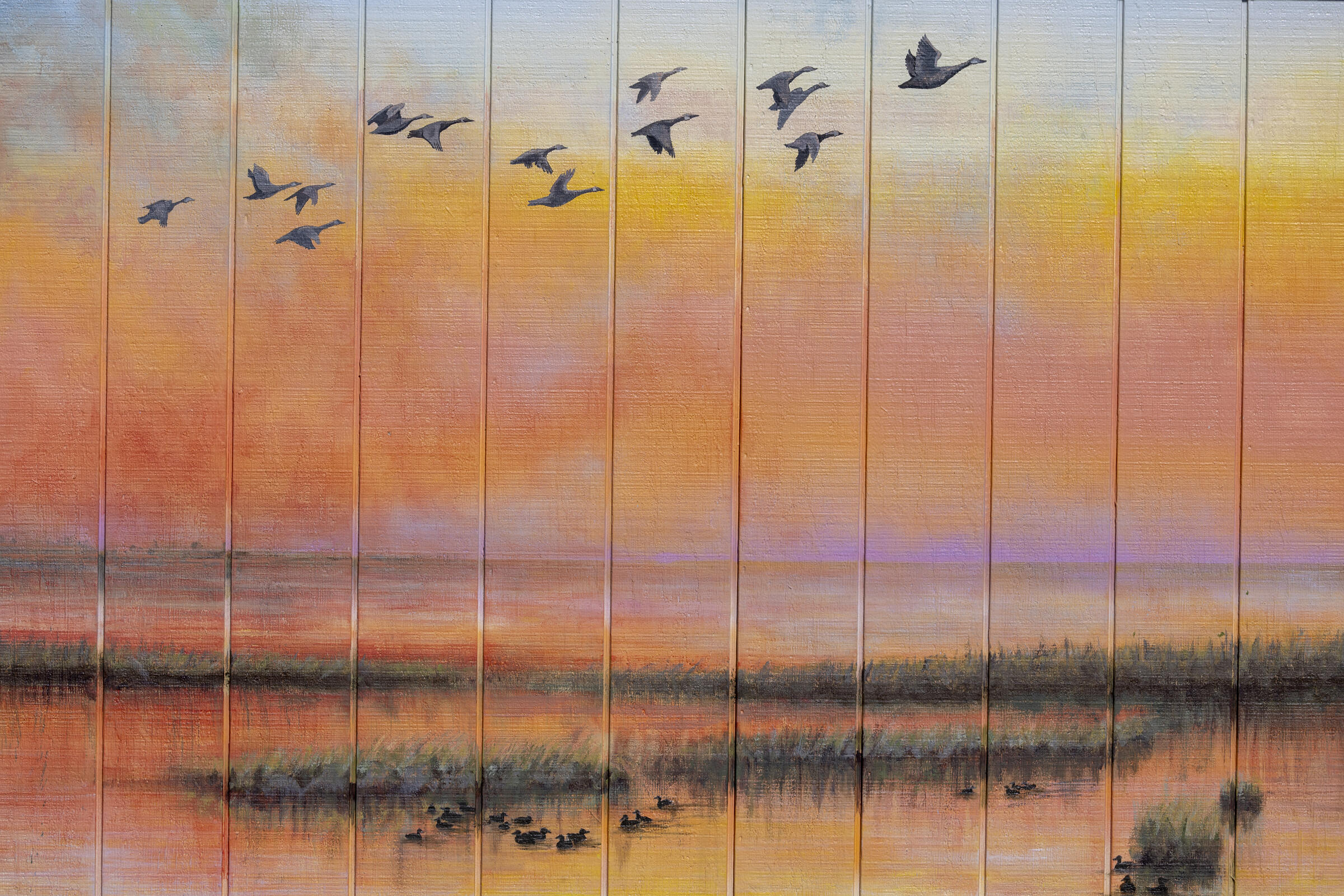Audubon’s Pine Island Sanctuary is home to 2,600 acres of globally rare coastal habitat and is one of the last undeveloped places in the northern Outer Banks. The sanctuary serves as a reminder of North Carolina’s past as well as a model for future conservation and resilience.
Much of our restoration, management, and research at the sanctuary is focused on understanding the unique habitats birds and other wildlife depend on—from the extensive marshes on Currituck Sound to the upland maritime forest—so we can conserve them into the future.
“At Pine Island, we are tasked with managing this amazing place amidst rapid change, from rising seas to encroaching development,” Sanctuary Director Robbie Fearn said. “We made significant progress this year on a number of research and restoration projects, with the help of our fantastic team and volunteers.”
Read on for a full recap of where some of our long-term projects stand and what we’ve been able to accomplish this year.
Advancing marsh restoration pilot projects
This year we made significant progress on designing four marsh restoration pilot projects on Currituck Sound. The projects include using Christmas trees and coir logs to reduce erosion, and rebuilding the marsh with thin-layer sediment placement. We are now in the permitting process for these projects. Learn more here.
Marshes provide important flood mitigation and water filtering benefits to surrounding communities. They’re also essential habitat for many birds and other wildlife year-round. By launching these projects, we hope to address the dual threat of rising seas and habitat degradation to restore and maintain essential resources for birds and people. As an added benefit, marshes are superior carbon sequestration systems.
Surrounded by ocean, sound, and human development, Audubon is in a unique position at Pine Island to protect and revive marsh habitat in this fast-changing ecosystem, all in partnership and coordination with the Currituck Sound Coalition.
Research in support of ecosystem restoration
Throughout the year, we worked with partners to assess the state of the marsh, including the current level of erosion and the health and abundance of underwater plants, all while testing the best methods for gathering that data.
Working with the Carolina Drone Lab at UNC’s Institute for the Environment and Elizabeth City State University’s UAS (Unmanned Aircraft Systems) program, we used aerial imagery to map shoreline and vegetation changes overtime. We then compare those images to historic satellite footage and data we gathered on the ground.
For students and researchers, this meant strapping on waders and snorkeling gear to map the elevation of the marsh and gather samples of underwater plant life. This hands-on surveying will give us a better understanding of how accurate and helpful drone technologies are for resilience planning and habitat monitoring. Learn more about the project here.
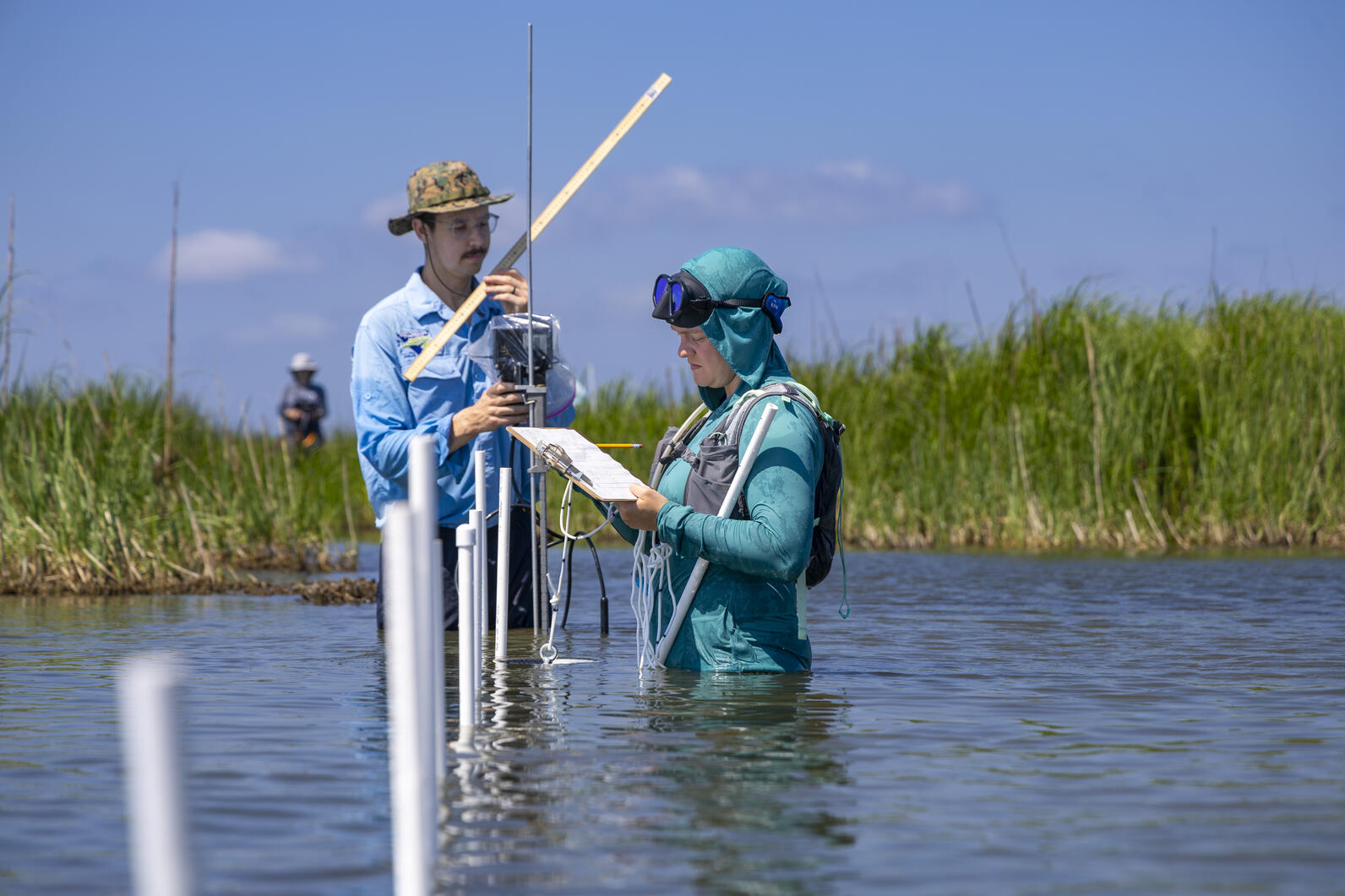
This year we also partnered with students from UNC’s Outer Banks Field Site on a two-part capstone project focused on Pine Island. For one part of the project, students conducted interviews with community members to understand their use of Currituck Sound, how they view these natural resources, and the values they ascribe to it.
The second piece was a field research project looking at marsh plots that have been frequently burned compared to those that are rarely burned to measure the impact of controlled fires on vegetation and elevation in the face of sea level rise. The results of these projects will help inform our community engagement and future management work on the sound. Watch the students present their findings on December 12, learn more.
NC Land and Water Fund project prepped for ground-breaking
A large portion of the Pine Island grounds and marshes will soon be transformed thanks to a grant from North Carolina’s Land and Water Fund. For the project, the team at Pine Island completed designs to restore a pond and stream system that will help ensure the entire hydrological structure in a portion of the sanctuary is functioning naturally and connected to the larger marsh. This will benefit countless wading birds, waterfowl, and even fish.
The project will include removing the bulkhead of a pond, replacing it with native vegetation, and improving waterflow through the whole system. Construction on this project will begin in early 2025. Learn more here.
Investments in the Pine Island team
We welcomed Sara Marschhauser as Senior Coordinator of Habitats and Facilities this spring. Among her first assignments was getting out early in the morning and evening to count secretive marsh birds and night jars singing in the forest and fields. These surveys are conducted every year and can tell us a lot about our harder to see marsh residents. Sara also launched a new project to track box turtles—a species that can help inform our management of birds and other wildlife.
Sara will be helping to implement the marsh restoration projects described above and ensure that Pine Island remains a bird haven for many years to come. We’re very excited to have Sara on the team, learn more about her here.
Historic lodge and buildings rejuvenated
Protecting our sanctuary’s cultural resources is an important part of the mission at Pine Island. This year we were able to update the kitchen and install new blinds and curtains at the sanctuary’s historic lodge. Maintaining an aging lodge in a sometimes-harsh coastal environment is difficult, and we’re thankful for the donations that made these updates possible.
The boathouse near the dock has a fresh new look as well, featuring a mural with different habitats of the sanctuary’s landscape. It includes waterfowl foraging in the sound, a woodpecker digging a cavity in a live oak, and other characteristics of the surrounding marsh and maritime forest.
Thanks to the Guild of Natural Science Illustrators – Carolinas who, after holding a retreat here, designed and painted this new mural over two weeks in all kinds of weather. We look forward to their next project with us. And thanks also to our amazing volunteer crew, who not only help us study bird populations, but also painted the basecoat for this spectacular mural. Visitors from around the world have experienced sunrise and sunset at the dock while searching for the animals included in this piece of art. It is a gift to be treasured for years to come.
Community engagement roundup
Our sanctuary is out of the way for most folks, but we were lucky to host an amazing flock of members, community partners, and volunteers this year.
Wake Audubon visited in the winter and was able to witness wonderful waterbirds.
We the Water completed their 300-mile journey along the entire NC coast to advocate for clean water and raise funds for the North Carolina Coastal Federation. Along the way, the crew stopped by Pine Island to change paddlers and complete the final leg of the trip.
We are hosting the five-year anniversary meeting of the Currituck Sound Coalition this winter to share updates and advance the Marsh Conservation Plan and nature-based solutions.
Center staff hosted two Wings Over Water bird walks during the annual birdwatching festival and three other Audubon center directors during the Nature Tourism and Wildlife Viewing working group meeting.
The center has also continued its long-standing partnership with Coastal Kayak Touring to offer kayaking trips of the sound throughout the spring and summer. These trips offer the public a unique view of our sanctuary and the extensive freshwater marshes of the Currituck Sound. Learn more about the trips here.


